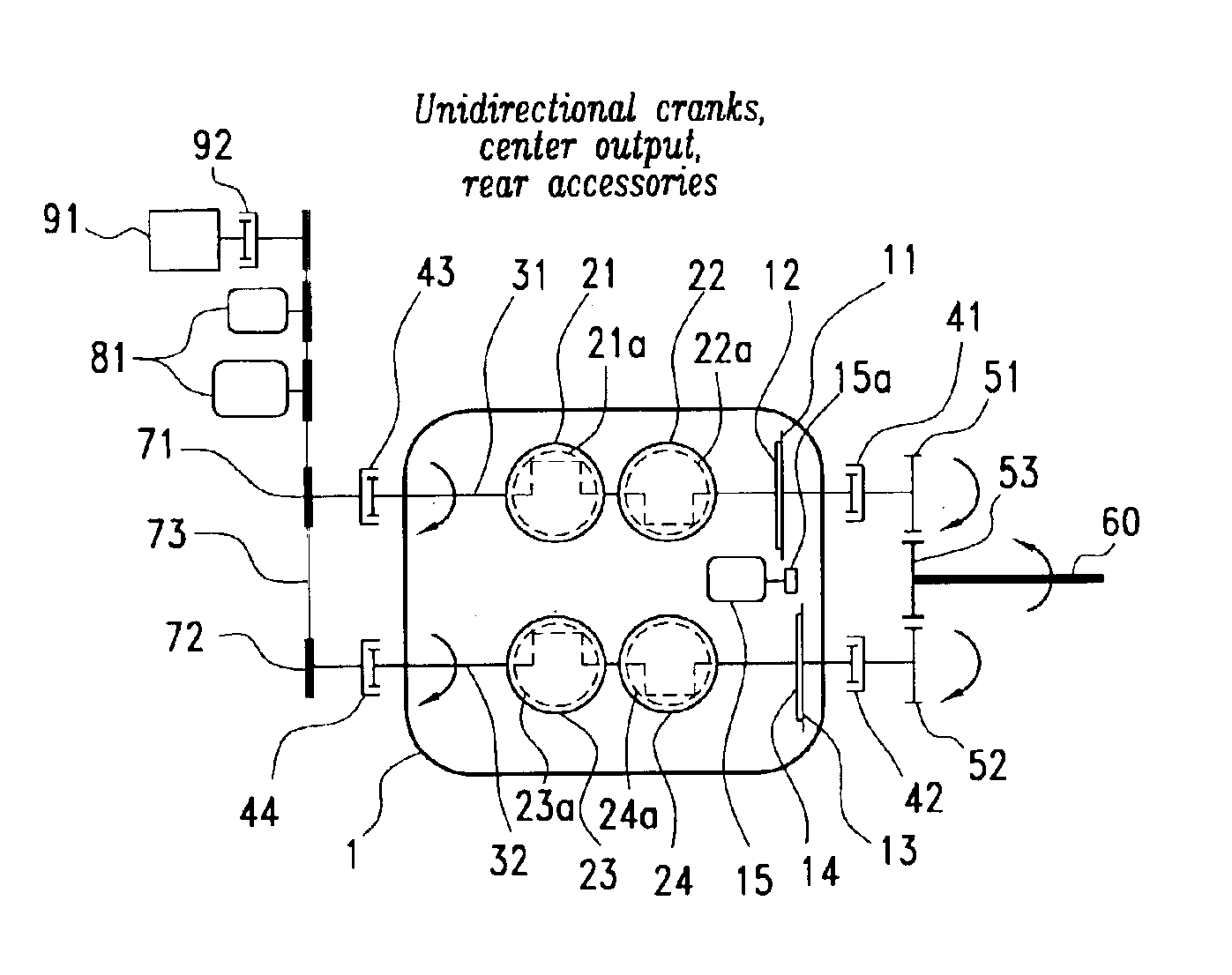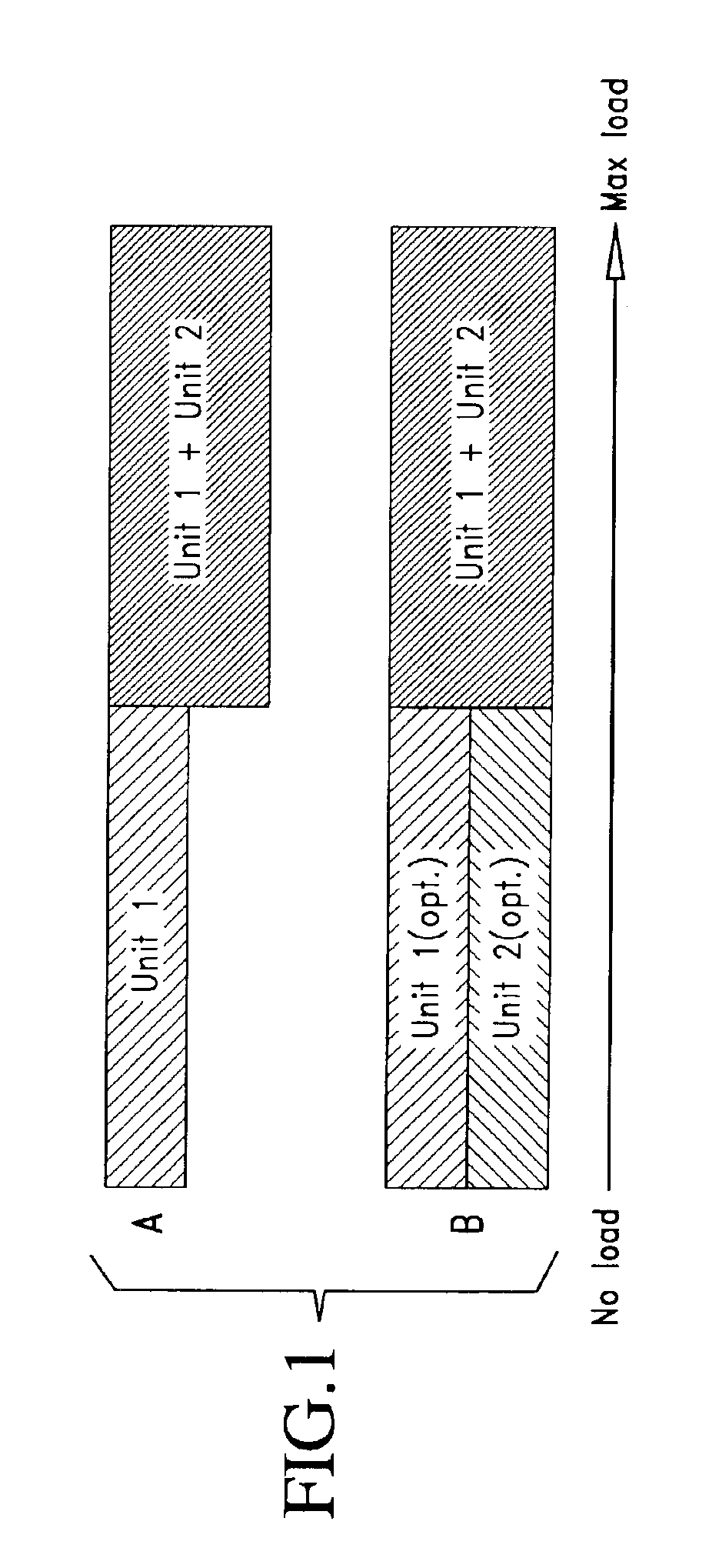Multi-crankshaft, variable-displacement engine
a variable displacement, multi-crank shaft technology, applied in machines/engines, jet propulsion mounting, reconfigurable combination engines, etc., can solve the problems of poor efficiency, relatively poor net fuel economy, and far from optimal powertrain required by the above considerations, so as to reduce the cost and weight of the vehicle, facilitate the transition, and reduce the effect of maintenance costs
- Summary
- Abstract
- Description
- Claims
- Application Information
AI Technical Summary
Benefits of technology
Problems solved by technology
Method used
Image
Examples
Embodiment Construction
[0069]All of the preferred embodiments shown in the drawing figures and described in the ensuing discussion illustrate a pair of two-cylinder displacement units in a parallel arrangement for the purpose of clarity, with the realization that more than two displacement units, more or less than two cylinders per unit, and / or such units disposed in a series arrangement rather than a parallel arrangement, could equally well be employed within the scope of the invention.
[0070]FIG. 1 illustrates two different operating strategies, termed “A” and “B”. According to operating strategy “A”, a primary displacement unit “Unit 1” operates alone to power the vehicle when power demand is low to moderate. When power demand increases past a predetermined level (either a fixed level or a computed level based on operating conditions), “Unit 2” which is designated as a secondary unit begins operating to supplement the power of Unit 1. When the power demand once again drops below the predetermined level,...
PUM
 Login to View More
Login to View More Abstract
Description
Claims
Application Information
 Login to View More
Login to View More - R&D
- Intellectual Property
- Life Sciences
- Materials
- Tech Scout
- Unparalleled Data Quality
- Higher Quality Content
- 60% Fewer Hallucinations
Browse by: Latest US Patents, China's latest patents, Technical Efficacy Thesaurus, Application Domain, Technology Topic, Popular Technical Reports.
© 2025 PatSnap. All rights reserved.Legal|Privacy policy|Modern Slavery Act Transparency Statement|Sitemap|About US| Contact US: help@patsnap.com



